Where Main and 9th Streets meet in downtown Stroudsburg, Monroe County, PA has been occupied by people since long before the streets were constructed.
The Stroud Mansion
Today, the historic 1795 Georgian-style Stroud Mansion prominently stands at the intersection. Originally built by Jacob Stroud for his son Daniel, the structure now serves as the headquarters of the Monroe County Historical Association (MCHA) and houses a local history museum and research library.
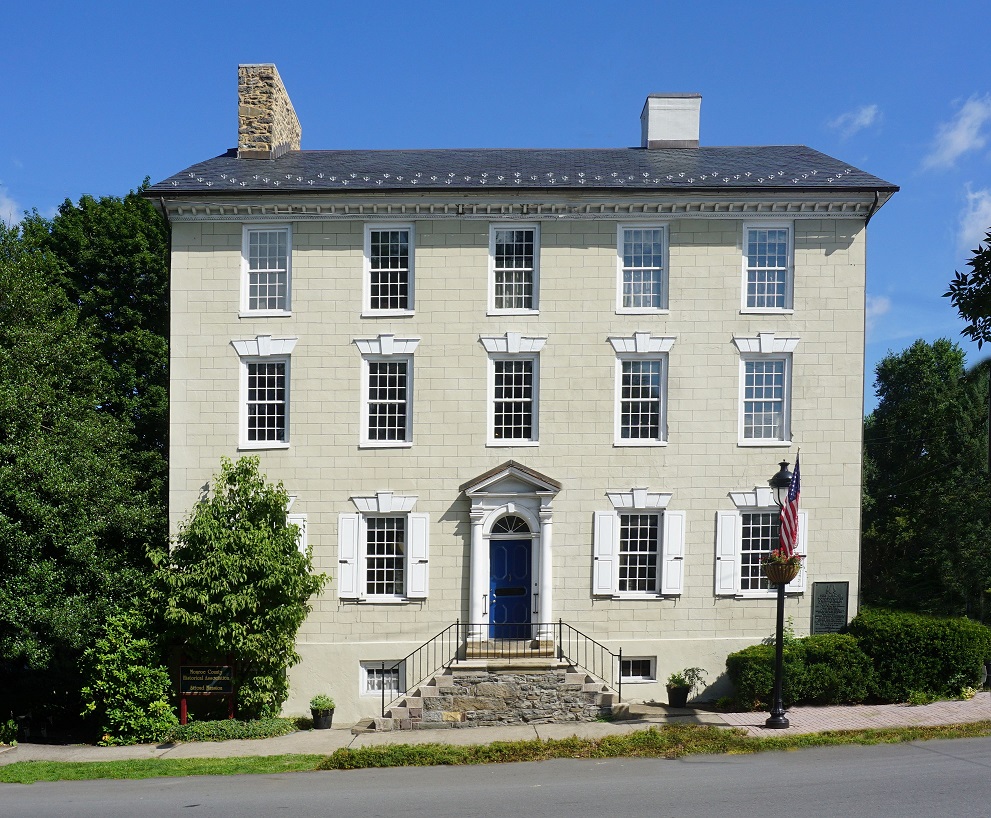
Prior to the Stroud family’s ownership of the area, the land was home to British colonists during the French and Indian War. At that time, Fort Hamilton, the first frontier fort in Monroe County, was constructed and occupied from December 1755 to 1757. It is believed that the fort covered an area very near where the Stroud Mansion stands. In fact, a Pennsylvania Historical and Museum Commission historical marker for Fort Hamilton is located on the Stroud Mansion property.

Lots of Potential
Over the years, MCHA staff and volunteers would find pieces of pottery, glass, and ceramics in the Mansion’s backyard. Most of the pieces were found after heavy rainfall or when volunteers tended the gardens. Knowing the area was in high use for hundreds of years, everyone was curious about what else might be underneath the ground at the Stroud Mansion.
In 2018, MCHA was awarded the Keystone Historic Preservation Grant from the PHMC to conduct an archaeological dig in the backyard of the Stroud Mansion. The goal of the excavation was to uncover any artifact that had been buried over the centuries.
Whether the artifacts turned out to be pre-contact, frontier, colonial, or contemporary eras didn’t matter. Anything unearthed would help MCHA to better understand and interpret the history of site.
Dig Partnership
Partnering with Dr. Jonathan Burns of Juniata College, MCHA hosted an archaeological field school site where college students could practice the skills of the discipline while shining light on the history of the location. Nine undergraduate and two graduate students enrolled in Dr. Burns’ field school course which was held from June 17 through July 7, 2019.
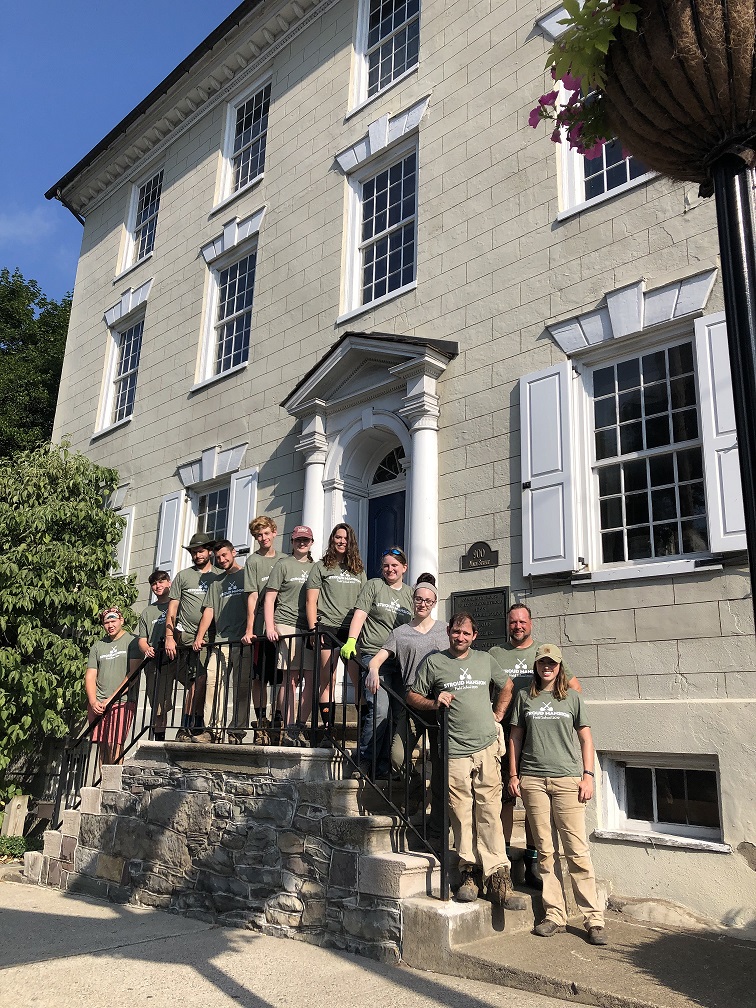
The Finds
During the field school, the team excavated eight test units; some of the holes were over 7.5’ deep! A variety of items were found, most of which appear to date to the Stroud era (early to mid 19th century).
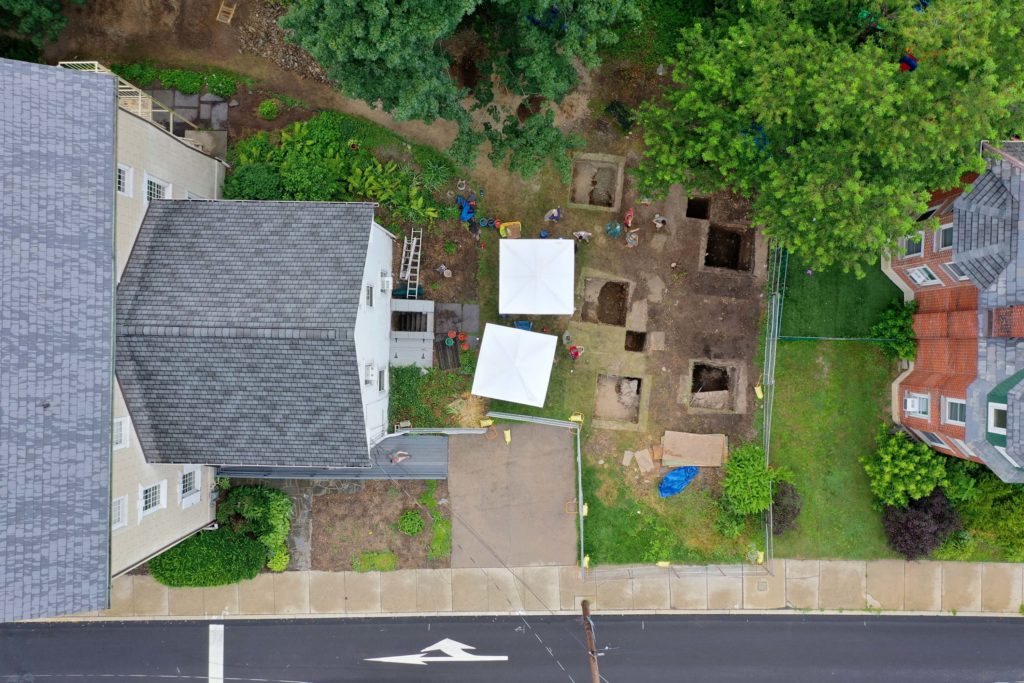
Some artifacts include a piece of black basalt ceramic, a transfer printed pearlware slop bowl, and a bone lice comb. One exception was the discovery of a Palmer projectile point which dates to 9,500-8,500 BP (Before Present).
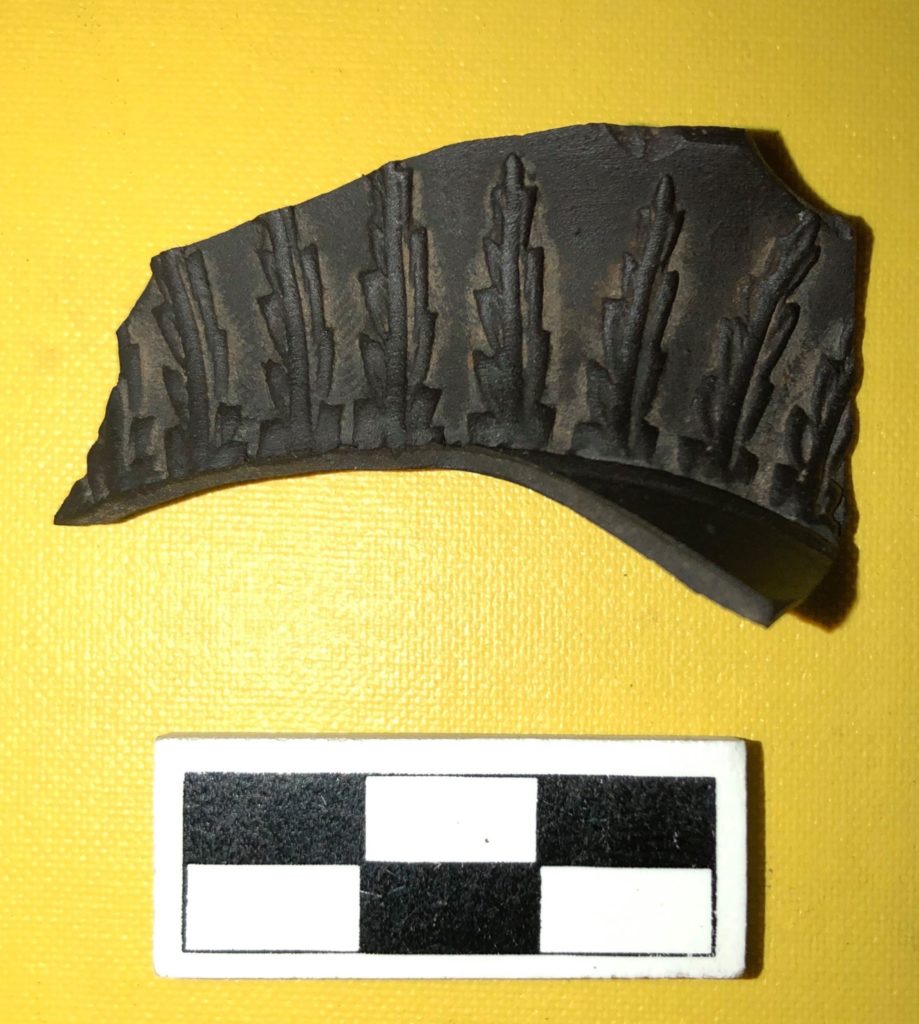
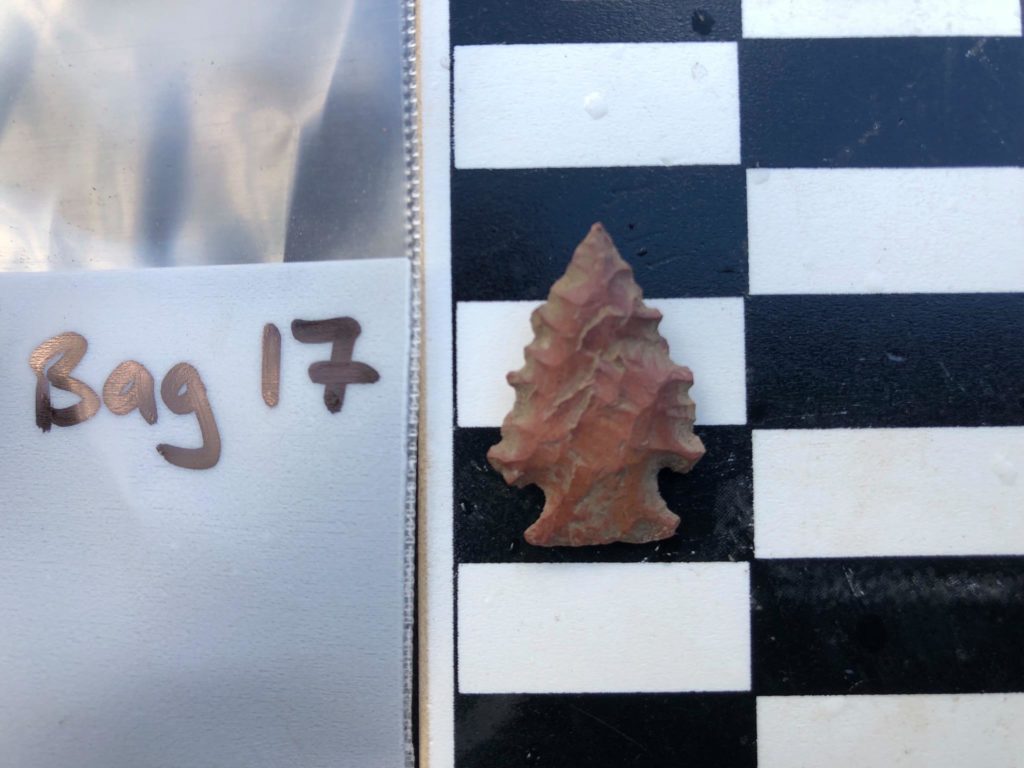
The archaeological team used historic maps, deeds, and wills housed at the Stroud Mansion to help substantiate their discoveries. In turn, the students discovered archaeological features that were never mentioned in the historical records. For example, the team uncovered a wall and an intact plaster and flagstone floor of what is believed to have been a summer kitchen.
Nearby, butchered animal bones were uncovered providing further evidence that the structure was a summer kitchen. Interestingly, there are no references to a summer kitchen in any known documents, so this discovery will have an immediate impact on the information given during tours of the Stroud Mansion.
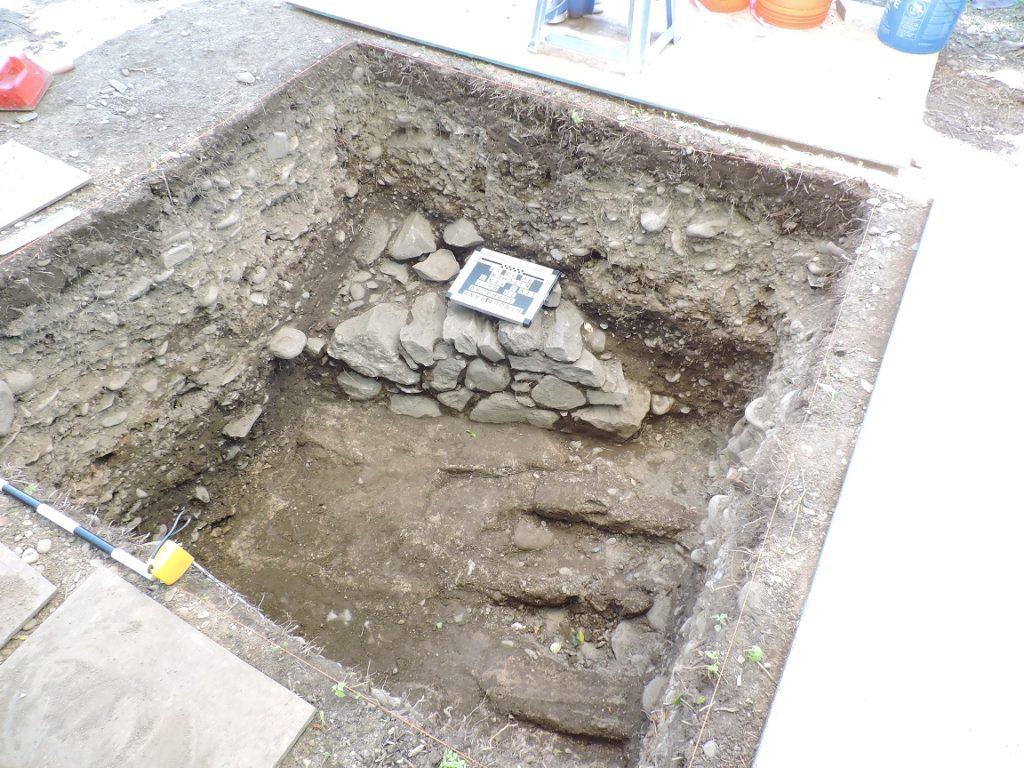
The Benefits
With an active archaeological dig taking place in a prominent and visible area in the county seat, public interest was extremely high. In addition to learning archaeological techniques, the students also developed their skills in engaging with the public. Residents, tourists, school children, members of the media, and elected officials stopped by to ask questions, view the dig site, and learn about the artifacts pulled from the ground.
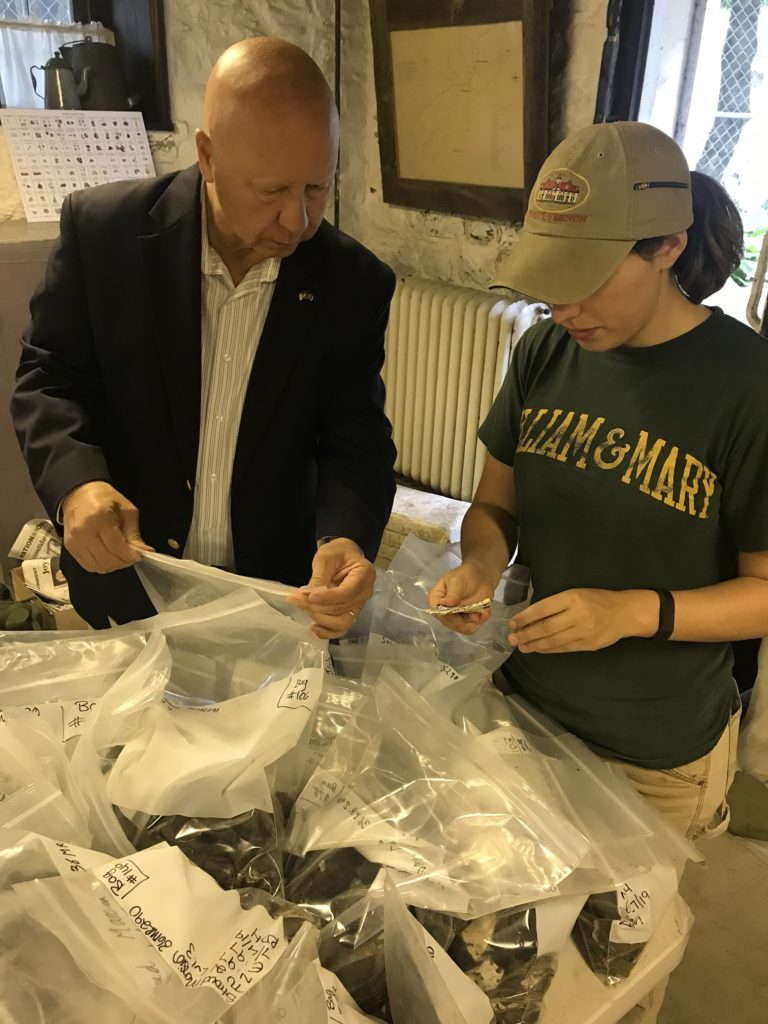
Daily dig updates and photos were posted to social media sites using the hashtags #PreservationHappensHere, #KeystoneGrant, and #StroudMansion. To see more of the discoveries, please visit the Monroe County Historical Association’s Facebook and Instagram accounts.
Over the 21-day dig, the archaeological team found over 50,000 artifacts. The artifacts are now back at Juniata College where students will clean, document, and catalog them during the 2019/2020 academic year before returning them to MCHA. The items will eventually be placed on display at the Stroud Mansion.
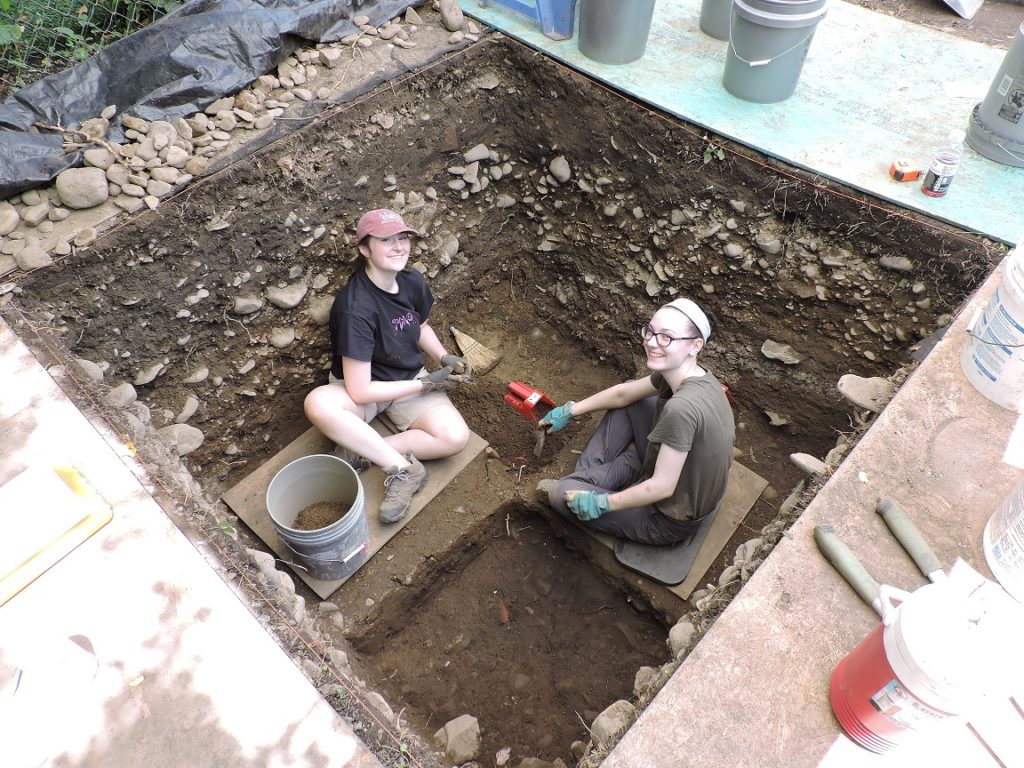
The Monroe County Historical Association would like to thank the Pennsylvania Historical and Museum Commission and Juniata College for their partnership in this project. This cooperative effort between the commonwealth, a county historical organization, college students, educators, and the community has already had a positive effect on the Association and the community.
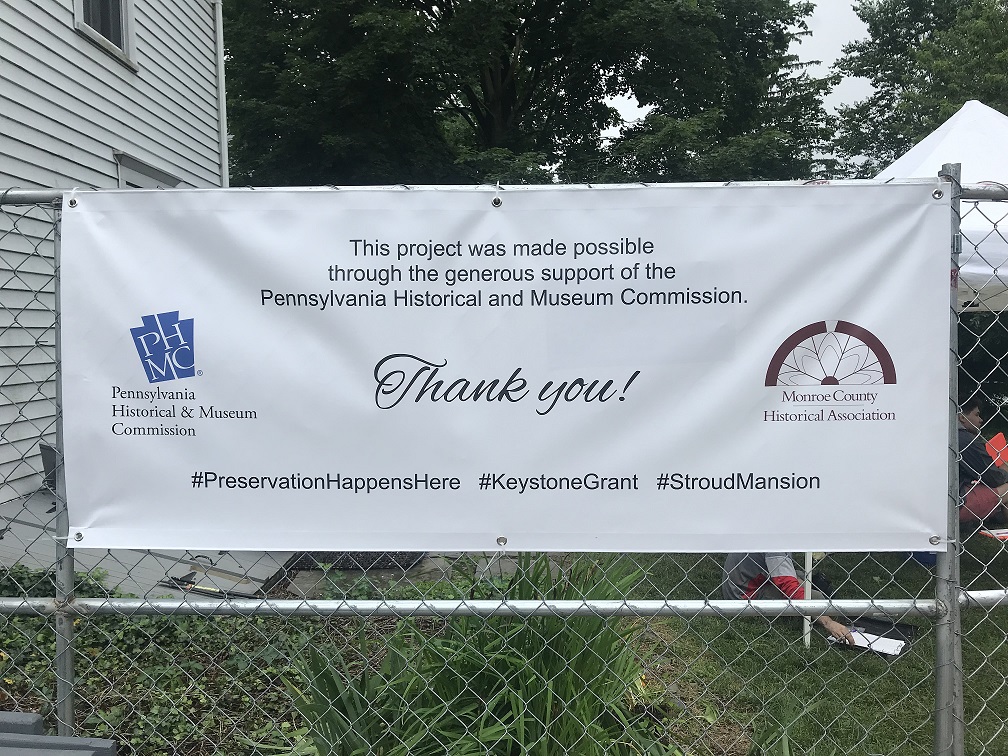
The discoveries made during the archaeological dig will allow for a better understanding of life in Monroe County, PA enabling the Monroe County Historical Association to enrich its tours and further its mission.
This week’s guest contributor is Amy Leiser, Executive Director of the Monroe County Historical Association.
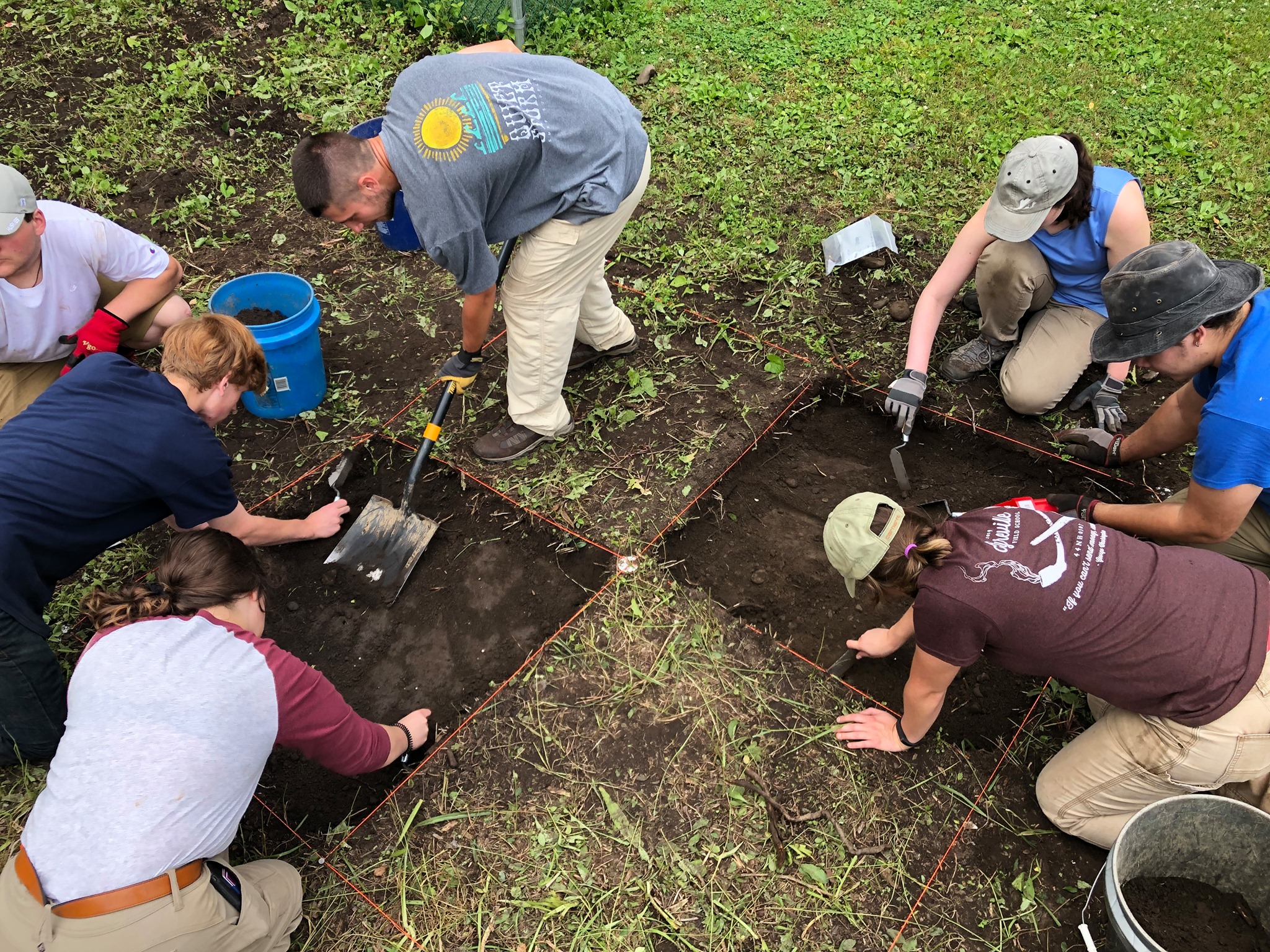
Excellent project! Super photos, and I’m very happy with the success had here, a favorite place of mine. Amy’s writing makes me envious for not being near the work done. MCHA had wonderful leadership and The Stroud Mansion is one hidden treasure!
Very, very interesting! ……. looking forward to viewing the artifacts.
Thanks A Lot For The Post. It Has Helped Me Get Some Nice Ideas. I Hope I Will See Some Really Good Result Soon.
https://csprojecthelp.xyz/